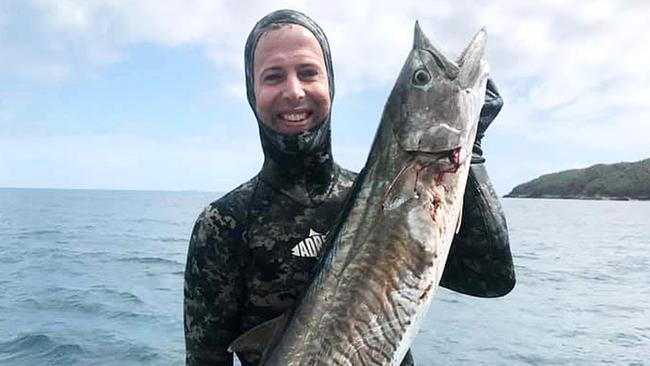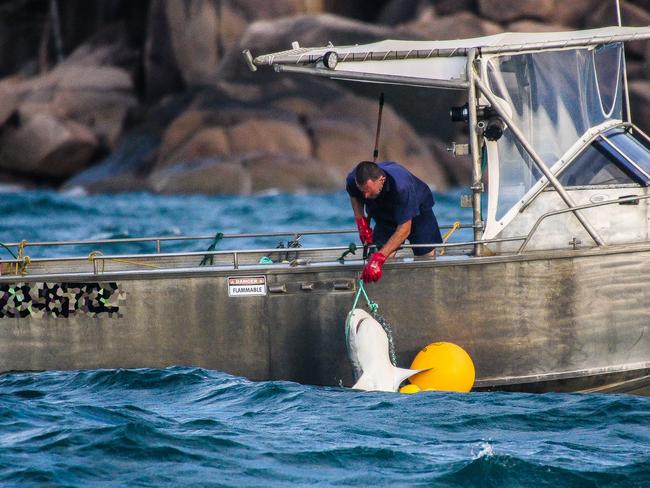Qld shark attack: Nets’ collateral damage revealed as new approach urged
Experts have warned shark culling or the increased use of nets won’t make Queensland waters safer, following the latest fatal attack. INTERACTIVE: 2024 shark net catch

QLD Politics
Don't miss out on the headlines from QLD Politics. Followed categories will be added to My News.
Widespread shark culls and increasing the use of shark nets won’t make Queenslanders safer in the water, experts have warned following the fatal mauling of spear fisherman Luke Walford.
It comes as figures from the state’s shark control program show nearly 1600 sharks were caught across Queensland in 2024 — the highest on record.
A majority tiger sharks (385), followed by bull sharks (200) ad tawny sharks (178).
The highest shark catches were on the Capricorn Coast (302), Mackay (263), Cairns (250) and Townsville (227).
But Griffith University shark researcher Vincent Raoult said the anomalous spike in sharks detected could be due to an increase in the number of nets and drumlines, as well as weather factors like increased rain pushing certain species closer to shore.
He said there was no scientific evidence showing an explosion in the shark population.
The death of Mr Walford, a school chaplain, has sparked an increase in shark monitoring in the region, with Acting Premier Jarrod Bleijie declaring the government’s priority was human safety before sharks.
A KPMG report into Queensland’s shark control program is understood to be in the hands of the Fisheries Department, with ministers yet to be briefed.
A new shark strategy will need to be written this year as the old five-year blueprint expires.
But Dr Raoult warned shark culls and widespread use of traditional nets and drumlines would not reduce the risk of attacks in the long-run.
“Thinking that killing a couple more sharks is somehow going to make things better, I think it’s quite naive,” he said.
Instead there are increasing calls for a shift to shark-detecting drones and a tagging program, aided by low-lethality smart drumlines which work to alert people if a predator has been detected nearby.
There’s also a growing push for people, particularly surfers, to use personal shark deterrent devices — like electric-field-generating anklets — to greatly reduce the risk of an attack.
Shark attacks remain rare.
The Australian Shark Incident Database shows there had been four shark attacks across the nation in 2024 before the death of Mr Walford on December 28 — one each in South Australia, New South Wales, Western Australia and Queensland.
The last fatal shark attack nationally was in South Australia in December 2023. In Central Queensland the most recent death before Mr Walford was 23-year-old Zachary Robba.
On recreational anglers reporting an increase in shark numbers and aggression, Dr Raoult said there was a growing mountain of evidence showing this was being caused by the predators learning where to get a quick feed.
“That impression that the fishers are thinking is definitely true … which would give them the impression that there’s more sharks,” he said.
“But what we think is happening is those sharks are basically becoming more clued in to the fact that recreational fishing boats equals an easy feed.”






